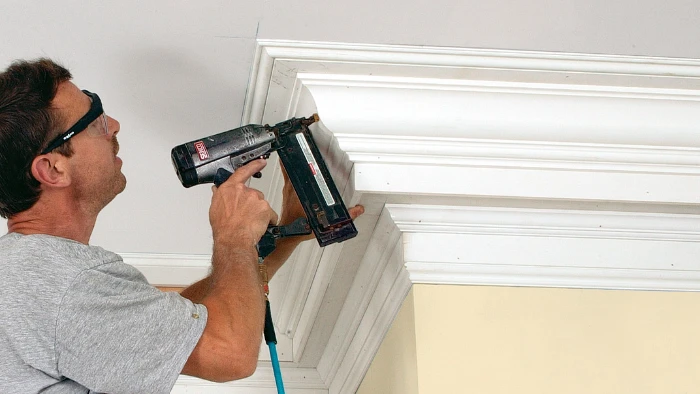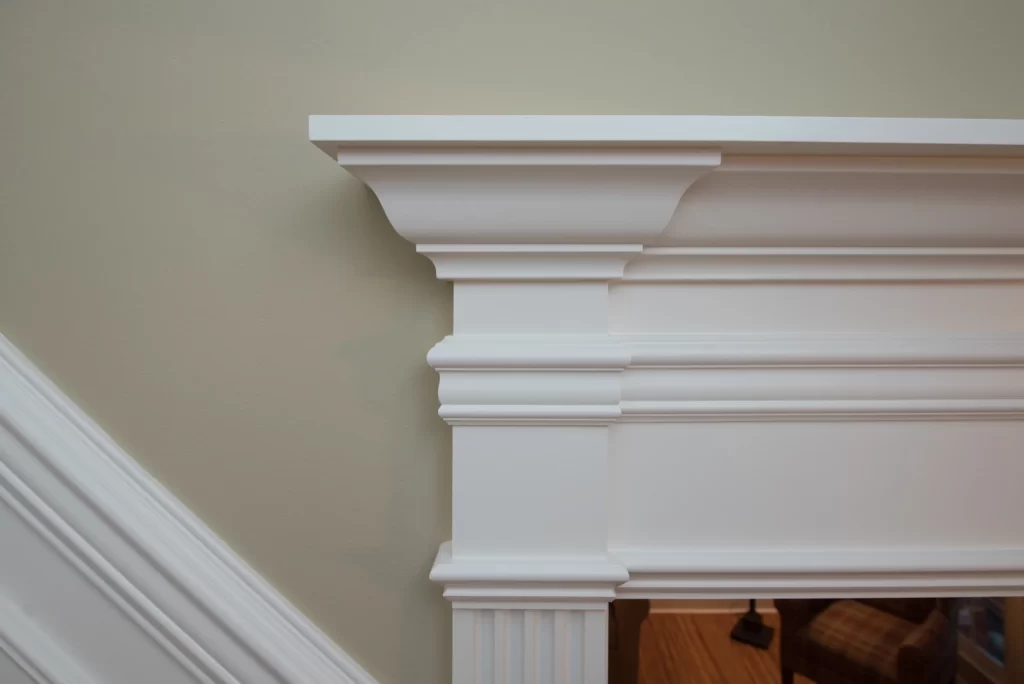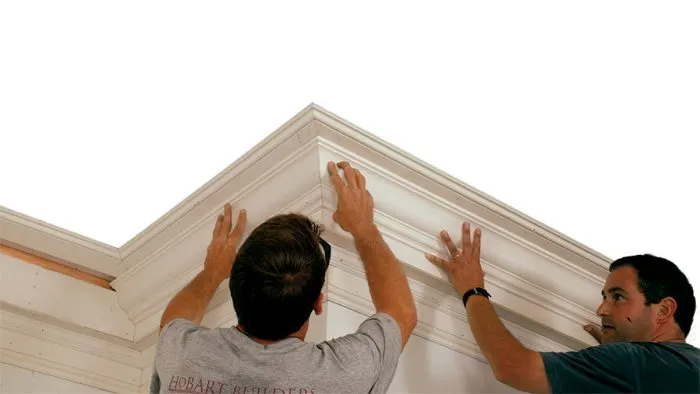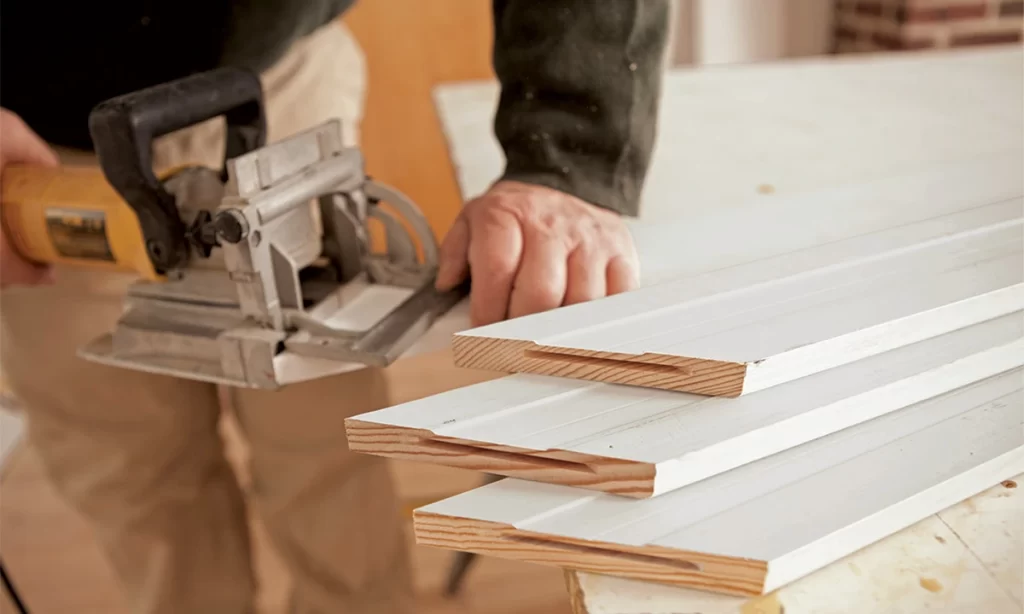When it comes to selecting the perfect trim carpentry materials in San Antonio, you’re in for a treat! Whether you’re sprucing up your home or working on a renovation project, making the right material choices can truly transform the look and feel of your space. San Antonio offers a diverse range of options to consider, from traditional woods like oak and pine to modern alternatives like PVC and MDF. The key is finding the right balance of aesthetics, durability, and budget to suit your specific needs. In this guide, Creative Remodeling will walk you through the essential factors to consider and help you make informed decisions for your trim carpentry project. Let’s get started!
Consider Local Climate:
Taking into account the local climate in San Antonio is crucial when selecting trim carpentry materials. San Antonio’s unique climate, with hot, scorching summers and occasional spikes in humidity, presents a challenge for certain materials. These conditions can lead to warping, cracking, or deterioration over time. To ensure the longevity and durability of your trim, it’s a wise choice to opt for materials that can stand up to the heat and moisture. Consider materials like hardwoods such as oak or maple, which are not only sturdy but also naturally resistant to these conditions. By making climate-appropriate choices, you’ll ensure that your trim materials can withstand the San Antonio weather and look fantastic for years to come, with the assistance of professional trim carpentry services.
Hardwood Options:
When it comes to hardwood options for your trim carpentry project in San Antonio, you’ve got some excellent choices to consider. Hardwoods like oak, maple, and cherry are popular for a reason. They not only lend a timeless, elegant look to your space but also have the durability to handle San Antonio’s climate variations. Oak, for instance, is known for its strength and resistance to wear and tear, making it an excellent choice for high-traffic areas. Maple offers a lighter, more contemporary appearance while still providing durability. Cherry, on the other hand, adds a touch of richness and warmth. These hardwoods can stand up to the heat and occasional humidity that San Antonio experiences, ensuring your trim looks beautiful and lasts for years.
MDF (Medium Density Fiberboard):
Now, if you’re looking for a more budget-friendly option for your trim carpentry project in San Antonio, consider Medium Density Fiberboard, or MDF. It’s a versatile choice that can be a real game-changer. MDF is made by compressing wood fibers with resin, resulting in a smooth and uniform surface that’s perfect for trim work. What makes it attractive, especially for those watching their wallets, is its affordability. However, it’s essential to be aware of common trim carpentry mistakes to avoid when working with MDF. While it’s easy to work with and allows for intricate trim designs without breaking the bank, MDF doesn’t have the natural grain of hardwoods. Still, it can be painted to achieve the finish you desire, making it a practical choice for those looking to balance quality and cost-effectiveness in San Antonio’s climate.

Pine and Poplar:
1. Affordability:
- Both Pine and Poplar are budget-friendly options for trim carpentry, making them attractive choices for cost-conscious homeowners in San Antonio.
2. Appearance:
- Pine has a light, pale color with distinct knots, giving it a rustic charm.
- Poplar, on the other hand, is typically light in color and doesn’t have as pronounced grain patterns, making it ideal if you prefer a smoother and more uniform look.
3. Durability:
- While both woods are softer compared to hardwoods like oak, they can still work well for trim in areas with lower wear and tear.
- Properly sealed and maintained, Pine and Poplar can hold up reasonably well in San Antonio’s climate.
4. Paintability:
- Poplar is known for its excellent paintability, providing a smooth surface for paint to adhere to evenly.
- Pine, with its more pronounced grain, may require extra attention when it comes to achieving a flawless painted finish.
5. Use Case:
- Consider using Pine and Poplar for less high-traffic areas or decorative trim elements where their affordability and ease of customization can shine.
6. Maintenance:
- Keep in mind that due to their softer nature, Pine and Poplar may require more frequent maintenance and touch-ups in the long run to keep them looking their best in San Antonio’s climate.
7. Consult a Professional:
- It’s always a good idea to consult with a local carpenter or contractor in San Antonio to determine if Pine or Poplar is the right choice for your specific trim project, considering factors like location and usage.
Style and Aesthetics:
When it comes to trim carpentry materials in San Antonio, considering style and aesthetics is crucial to achieving the look you desire for your space. San Antonio boasts a rich cultural heritage, which can influence your choice. To find the perfect fit for your project, explore various materials like hardwoods such as oak or pine for a more traditional or rustic feel, with their natural grains and warm tones complementing the local aesthetic beautifully. Alternatively, if you’re aiming for a modern or sleek appearance, you might lean towards smoother, paintable options like MDF or Poplar. Let your personal style and the existing design of your home guide your choice of trim materials, ensuring that they not only withstand San Antonio’s climate but also enhance the overall look and feel of your space. Trim carpentry can transform your home, adding character and sophistication to your San Antonio residence.

Budget:
Budget considerations play a significant role when selecting trim carpentry materials in San Antonio. It’s important to set a budget that aligns with your financial resources and the scope of your project. Hardwoods like oak or cherry can be on the higher end of the price spectrum, but they offer durability and timeless appeal. On the other hand, if you’re working with a tighter budget, materials like Pine, Poplar, or MDF can be more budget-friendly options that still allow you to achieve an attractive finish. Balancing your financial constraints with your desired trim material is key, ensuring you get the best value for your investment in San Antonio’s climate.
Maintenance:
Maintenance is a crucial factor to consider when choosing trim carpentry materials in San Antonio. The local climate, with its hot summers and occasional humidity, can impact how often you’ll need to maintain your trim. Hardwood options like oak and maple are generally low-maintenance, requiring only periodic cleaning and sealing to maintain their appearance and integrity. In contrast, softer woods like Pine and Poplar might demand more frequent attention, especially in high-traffic areas. MDF, while budget-friendly, can be prone to moisture damage if not adequately sealed. So, your choice should align with your willingness to commit to maintenance, ensuring your trim remains in excellent condition and withstands San Antonio’s climate challenges.
Trim Project:
The type of trim project you’re undertaking in San Antonio should be a key consideration when selecting materials. Different trim elements have varying requirements. For instance, baseboards, which are subject to more wear and tear, benefit from durable materials like hardwoods such as oak or maple. On the other hand, decorative crown molding or wainscoting, while still important, may allow for more flexibility in material choice since they’re less prone to physical impact. Assess the specific needs of your project, whether it’s enhancing functionality, adding a touch of elegance, or a bit of both, to ensure that the trim materials you choose align with the purpose and aesthetics of your trim project in San Antonio’s unique climate.
Finish and Paintability:
Considering the finish and paintability of trim materials is a practical aspect when working on your project in San Antonio. If you have a particular color or finish in mind to match your interior design, it’s essential to choose materials that can achieve your desired look. For instance, MDF and Poplar are known for their excellent paintability, allowing you to achieve a smooth and uniform finish effortlessly. In contrast, hardwoods like oak or cherry can be stained to showcase their natural beauty but may require more effort if you prefer to paint them. Explore the possibilities while considering choosing the right trim carpentry styles to ensure your trim project in San Antonio turns out just the way you envision it, with the perfect finish and aesthetics that complement your interior design.

Consult a Professional:
When it comes to selecting the perfect trim carpentry materials in San Antonio, one of the most valuable pieces of advice is to consult a professional. Local carpenters or contractors in San Antonio have a wealth of experience and knowledge about the materials that work best in the area’s specific climate conditions. They can provide personalized recommendations based on the type of project you’re undertaking, your budget, and your design preferences. Consulting with a professional ensures that you make an informed decision, avoiding costly mistakes and ensuring the longevity and beauty of your trim work in San Antonio’s unique environment. It’s a smart step to take to ensure your project goes smoothly and yields the best results.
FAQ’s:
What is the best wood for trim?
The best wood for trim is hardwoods like oak, maple, or cherry due to their durability and timeless appeal.
What is trim in carpentry?
Trim in carpentry refers to the decorative and functional elements such as moldings, baseboards, and casings used to finish and enhance the appearance of doors, windows, and walls in a building.
What material is used for interior trim?
Interior trim is commonly made from materials like wood (such as pine, oak, or MDF), PVC, or composite materials.
How do I choose the right trim?
Choose the right trim by considering factors like your budget, style preferences, project requirements, and the local climate’s impact on materials.
What are parts of TRIM?
Parts of trim in carpentry typically include baseboards, casings, crown moldings, chair rails, and wainscoting.
CONCLUSION:
In conclusion, choosing the perfect trim carpentry materials in San Antonio is a multifaceted process that requires careful consideration of factors like local climate, budget, style, maintenance, and the specific needs of your project. Whether you opt for durable hardwoods, budget-friendly options like MDF or Pine, or other materials like Poplar, consulting with a local professional can be invaluable. By balancing these factors and making an informed decision, you’ll ensure that your trim not only enhances the aesthetics of your space but also withstands the unique challenges of San Antonio’s climate, resulting in a beautiful and long-lasting finish.
